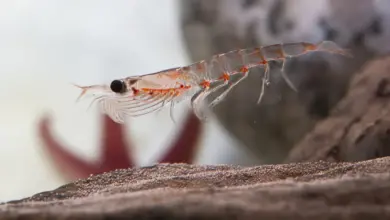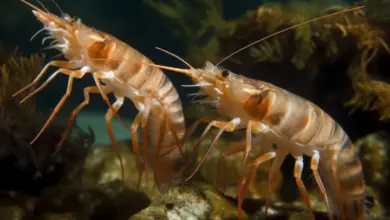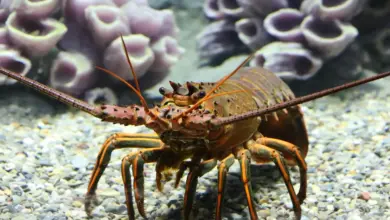What Eats Crabs?
What Eats Crabs? What Do Crabs Eat?
Crabs play an important role in marine and coastal food webs. Their abundance and high protein content make them a valuable food source for many predators.
While numerous animals feast on crabs, this article will provide an in-depth look at the most significant crab predators: sea otters, octopuses, blue crabs, seabirds, sharks, sea stars, raccoons, and herons.
We will examine how each species hunts, catches, and feeds on various crab prey.
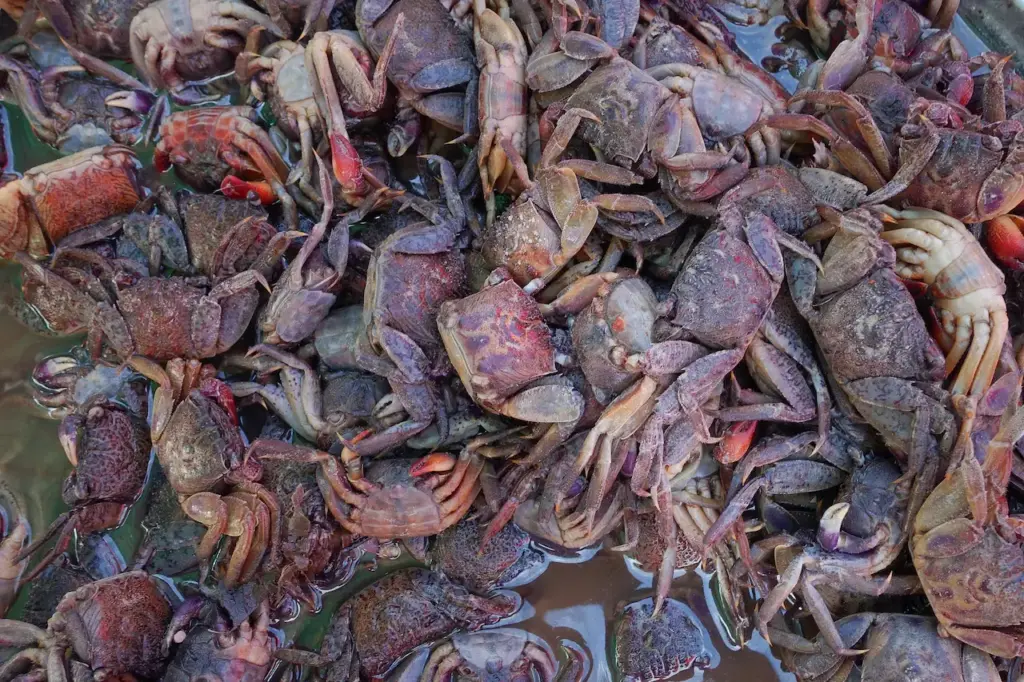
Sea Otters
Sea otters are highly adapted to prey on crabs and consume them in large quantities. Living along the North Pacific coast, these aquatic mammals can eat up to 30% of their body weight in food daily. A substantial part of their diet consists of crabs and other crustaceans.
Sea otters use their forepaws to catch crabs, frequently finding them in rocky reefs and kelp beds offshore. They are specially equipped to dismantle hard shell crabs. Sea otters float on their backs to eat, placing crabs on their chests to crack open using rocks.
Their dexterous paws make it possible to remove meat from inside the shell. Smaller crabs they can crunch whole with their teeth.
Some sea otter populations particularly target Dungeness crabs, rock crabs, king crabs, and pelagic red crabs.
They hunt efficiently, damaging the crab populations and shellfish industry in some areas. Their ability to access food resources has allowed sea otters to thrive in northern coastal habitats.
Octopuses
Octopuses are cunning hunters uniquely adapted to feed on crabs. Their intelligence, camouflage abilities, and flexible bodies allow them to pursue all types of crabs. An octopus’s eight muscular, suction-cupped arms can capture crabs from tight spaces.
Once an octopus seizes a crab in its tentacles, the soft-bodied mollusk uses its beak-like mouth to penetrate the crab’s shell. It releases saliva that paralyzes and kills the crab.
The octopus then slowly dismantles the crab piece by piece, using its arms and mouth to extract meat from inside the shell.
Octopuses that live on rocky reefs and shallows excel at hunting hard-shelled brachyuran crabs like king and box crabs. Deep sea octopuses prey on lithodid stone crabs.
Octopuses are such effective hunters they can impact crab populations, but their elusiveness makes them difficult to study. Their versatile diet also includes shrimp, crayfish, lobsters, and fish.
Blue Crabs
Blue crabs are voracious and opportunistic predators within estuaries and salt marshes. Males and juveniles actively hunt live prey, while mature females become scavengers. Crab makes up a large portion of blue crabs’ diet.
Using their sharp pincers, blue crabs crack open the carapaces of soft-shell crabs that have recently molted. They dismantle the legs and body of their crab prey piece by piece. Blue crabs also pursue shrimp, worms, clams, oysters, and almost anything they can capture and eat.
Blue crabs take advantage of their adaptations for hunting within turbid, brackish waters. Their sideways swimming allows them to navigate through grasses easily. Blue crabs migrate between estuaries and open ocean to tap into food resources, including other crab species.
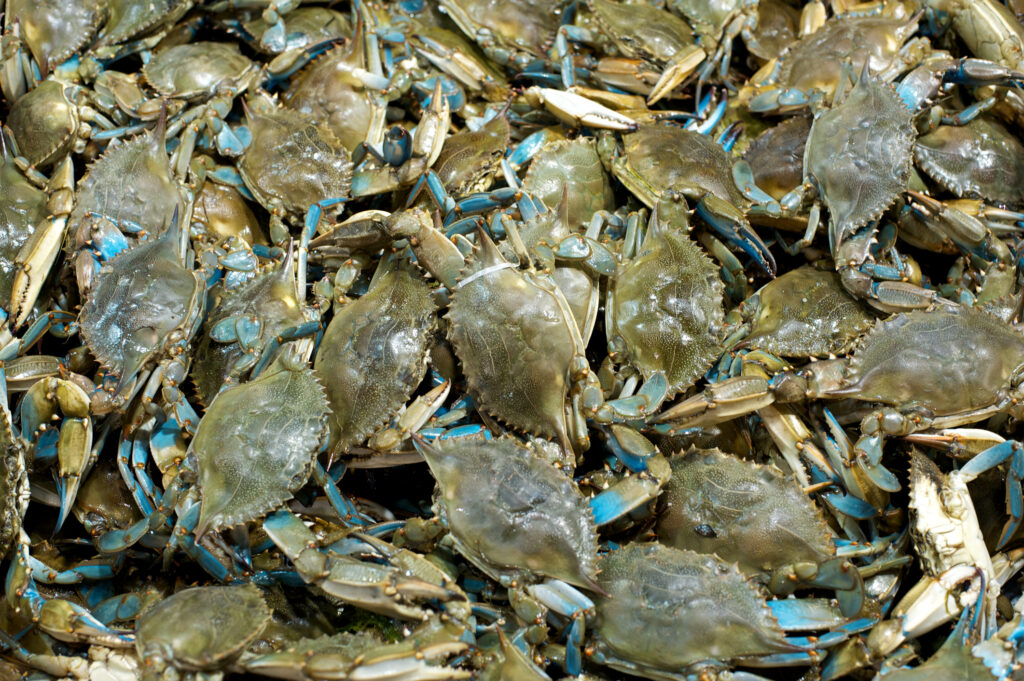
Seabirds
Many seabirds feed extensively on crabs, making the crustaceans a dietary staple. Shorebirds like gulls consume crabs where they access them near coasts and islands. Pelagic birds eat more crabs offshore.
Gulls frequent the intertidal zone and shorelines searching for exposed crabs when tides recede. They can crack open hard shells by dropping crabs from heights. Gulls use their sharp bills to tear crabs apart and consume them.
Further out to sea, puffins, murres, and other auks catch crabs during dives for fish. They swallow smaller crabs whole underwater. Larger crabs get brought to the surface where birds bash apart the shells or fly up and drop them onto rocks.
Crabs provide an abundant source of protein for breeding seabirds feeding chicks. Birds like the marbled murrelet rely on crabs and help regulate those populations near their nesting areas.
Sharks
Though not their primary food source, sharks do opportunistically feed on crabs. Nearshore species like leopard sharks gobble up mole crabs, rock crabs, and other crabs accessible in the shallows and intertidal zones.
Larger sharks utilize crushing jaws and jagged teeth to crack open hard shells of king crabs, Dungeness crabs, spider crabs, and other brachyurans. Port Jackson sharks suck crabs up whole and crush apart the shells with powerful bites.
The bonnethead shark has molars specially adapted for eating crabs. Up to 80% of this coastal shark’s diet can consist of blue crabs and stone crabs. It uses its shovel-shaped head to root around marshes and mudflats for hidden crabs.
For sharks, crabs provide a supplemental food source when available. These opportunistic hunters won’t pass up an easily caught meal. Sharks help regulate crab populations, especially in nursery habitats where juvenile crabs are abundant.
Sea Stars
Though slow-moving, sea stars are highly effective predators of crabs. The many-armed starfish called the sunflower sea star is especially adept at prying open and eating crabs.
Sunflower sea stars use their numerous tube feet and arms to pull open gaps in crab shells. They can leverage their entire body to crack apart and pull open carapaces. Once exposed, the sea star ejects its stomach into the crab shell to externally digest the meat.
Other sea stars like the ochre sea star and giant pink sea star also feed on various crab species when given the opportunity. Sea stars may play an important role in limiting crab numbers where the echinoderms flourish. Their feeding has cascading impacts on intertidal ecosystems.
Raccoons
Raccoons are opportunistic feeders that will eat crabs when they can access them near shorelines and beaches. These dexterous mammals use their front paws to feel for crabs buried in sand or mud. During low tide, raccoons probe the exposed intertidal zone for hidden crabs.
They flip rocks and root through crab burrows to uncover their prey. Raccoons crack open hard shell crabs with their teeth and sharp claws. They rinse crabs to remove grit before consuming them. Raccoons target smaller crab species they can dismantle and devour.
Beach-dwelling raccoons feast on fiddler crabs, mole crabs, shore crabs, and juvenile Dungeness crabs. Their manual dexterity and hand-eye coordination make them quick and effective hunters able to take advantage of transient crab food sources.
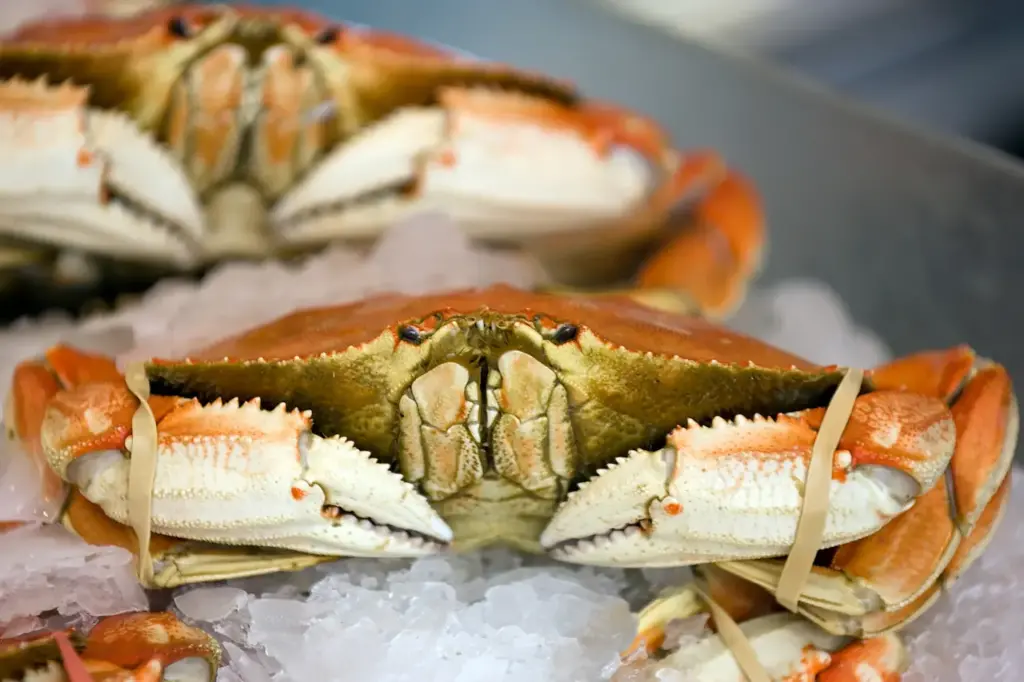
Herons
Wading birds like herons consume crabs in wetlands, marshes, and shallow waters. Great blue herons and other large herons spear and impale unlucky crabs that cross their path. Herons scan for movement and use lightning-fast strikes with their sharp beaks to capture crabs.
Once caught, herons manipulate the crab in their bill, repositioning it so they can swallow their prey whole. Plunge-diving birds like egrets snatch up fiddler crabs, shore crabs, and juvenile Dungeness crabs from just below the water’s surface.
Herons stalk patiently through shallows and ambush unwary crabs. Their adept hunting skills allow herons to thrive by feeding on abundant crab populations in coastal regions.
Conclusion
From sea otters to herons, crabs constitute an integral food source for many marine predators and seabirds. These species have evolved physical and behavioral adaptations enabling them to catch and feed on crabs effectively.
Crabs provide essential nutrients and calories to sustain coastal food webs around the world. Their abundance and vulnerabilities make them key prey that many predators can thrive on.

